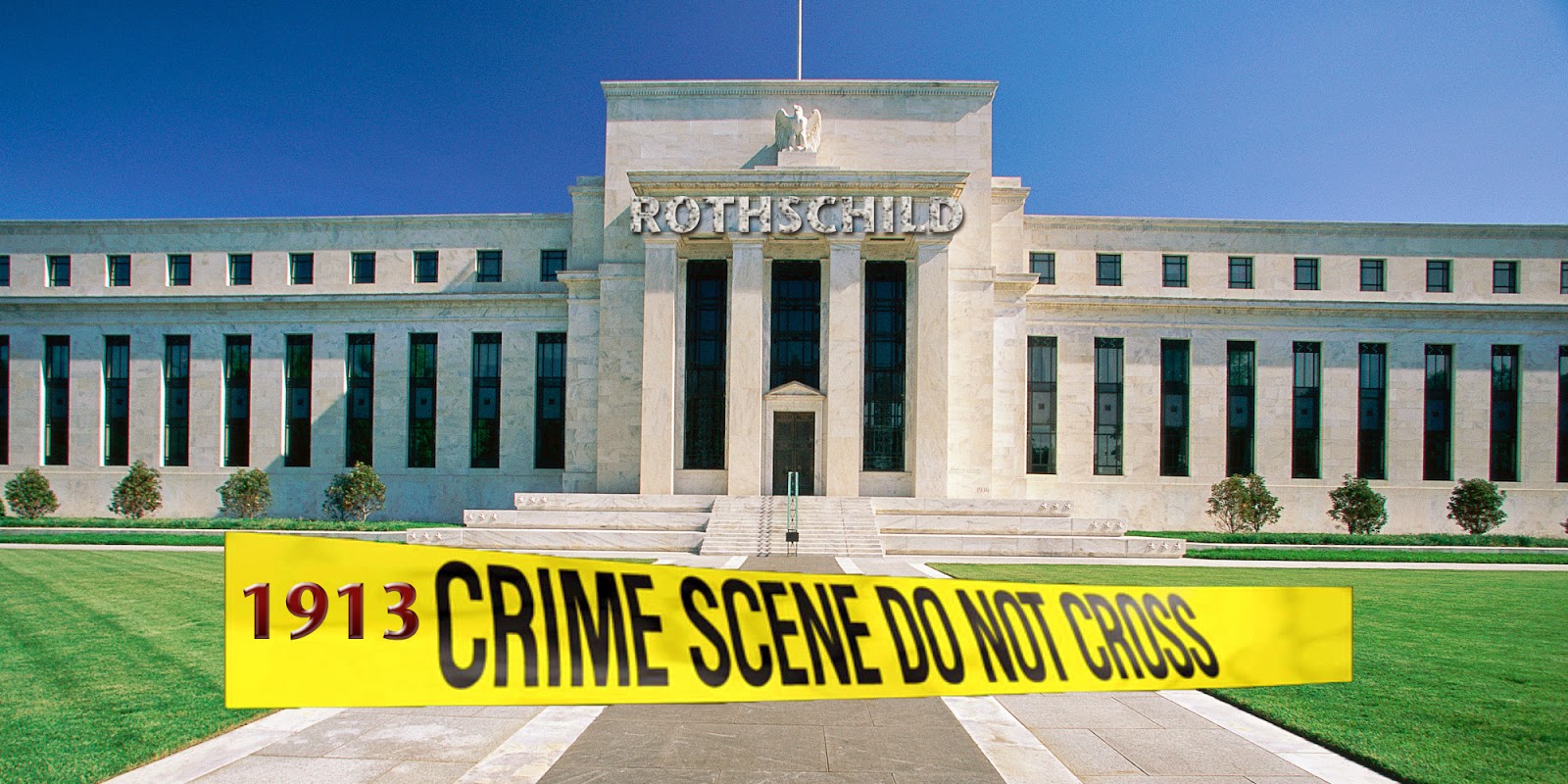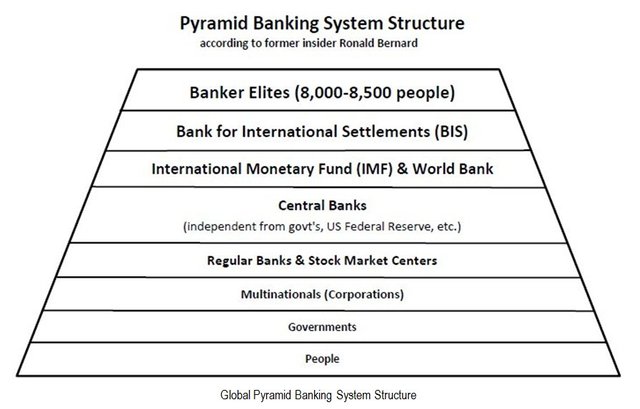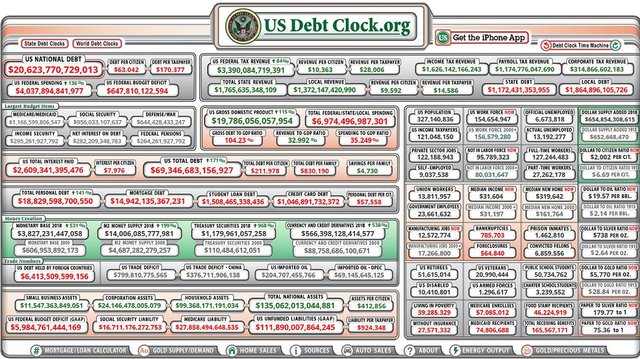This is the final segment of a 4-part series entitled The International Banking Cabal Exposed brought to you by @libertyacademy.
- PART I – The Cabal
- PART II – The BIS
- PART III – The IMF & World Bank
- PART IV – Central Banks & Conclusion
The International Banking Cabal Exposed: Part IV - Central Banks & Conclusion
Central Banks

What is perhaps the greatest deception of all is that most nations’ central banks are actually private institutions that are independent from government who have a monopoly on issuing the nation’s money supply – by printing notes and creating digital currency in the banking system.
When a government needs money it (usually through its Treasury) issues bonds which are actually bought by the central bank (and/or commercial banks); this is essentially a loan to the government for which the central bank will charge interest. This interest expense usually accounts for a large percentage of a government’s annual budget and it is mostly the citizens of the country who pay for this through income tax and other forms of taxation. This process essentially turns countries into debtors (to the private central banks) and its citizens into tax slaves. The system is designed to be deceivingly complex so that the majority of citizens are unable to understand it for if they did, they would certainly not stand for it.
Financial author Mike Maloney has created an outstanding video series called ‘The Hidden Secrets of Money’ (30) in which he beautifully explains this process (of currency creation) in the fourth episode entitled ‘The Biggest Scam In The History of Mankind’ (31).
To illustrate the extent of this indebtedness one needs only consult the stated figures in its country’s financial books, or via the various ‘debt clocks’ found online which simplify and summarize the damage.
For example, most countries’ debt burdens range from the hundreds of billions to trillions of U.S. dollar equivalent (32).
While the United States has the largest nominal debt – around $20 trillion (33), or over $61,000 per citizen, Japan has the largest in terms of debt related to its GDP (Gross Domestic Product – the annual amount of goods and services produced by the nation) which figures at 250%; in other words, Japans spends and owes 2.5 times more than it produces on a yearly basis.
A nation’s commercial banks (the ones from which individuals and companies hold accounts with and borrow money from) often hold some of its cash holdings with the central bank and also have the ability to borrow money from it.
In addition, central banks are usually in charge of dictating a nation’s monetary policy (through interest rate adjustments on deposits and loans). That means, it can decide to increase or decrease the money supply, increase or decrease interest rates, and so on. By increasing the money supply – which is often referred to as “money printing” it creates what we call inflation. The term inflation is often mistakenly taken to infer that the cost of goods and services are increasing. But in actuality, inflation means that the purchasing power of the currency is decreased due to its increase in supply.
Central Banks often set ‘inflation targets’ – something like 2% for instance. In reality, by purposely creating inflation (by means of increasing the money supply) it is in fact decreasing the value of the currency. Most citizens don’t seem to realize that this is a form of theft since the purchasing power of their money is decreased as is the value of their savings. In the short term, the theft is not so noticeable; but over many years it amounts to a lot. That is why the “cost of living” seems to become more and more burdensome.
Another function of Central Banks is to provide ‘liquidity’ to commercial banks in case they get in short supply of funds as in the case of a financial crisis or a “run on the bank” for instance. Liquidity simply refers to cash (either in paper or digital form). A prime example of this is when the central bank of the United States – the Federal Reserve – provided an infusion of cash (also called a “bail out”) to some big commercial banks (such as Bank of America and Citibank) during the 2007-2008 Financial Crisis so they wouldn’t run out of cash for their operations and to ensure that depositors’ funds were intact and accounted for. In other words, central banks act as an insurance mechanism to ensure that the banking system doesn’t fail.
While central banks disguise themselves as government institutions and purport to act in the best interest of their respective nations, the fact remains that the majority of them are private institutions that are completely independent and are mainly focused on funneling profits to their shareholders – whom, unfortunately, are obscured in a veil of extreme secrecy. Since central banks are set up as private corporations, they are under no legal requirement to disclose their true owners or shareholders. In this respect, they are highly secretive and nefarious.
Over the years many have attempted to research exactly who their shareholders are and have found them to include both individuals of prominent families as well as banking and other corporations.
For instance, in the United States the Federal Reserve is believed to be owned by the large commercial and investment banks such as JP Morgan Chase, Citigroup, Bank of America, Wells Fargo, Goldman Sachs, and Morgan Stanley (among many others). In addition, a 1976 research report entitled ‘Federal Reserve Directors: A Study of Corporate and Banking Influence’ (34) indicates that several European and American banking families including the likes of the Rothschilds, J. Henry Schroder, the Rockefellers, Alan Pifer (President of Carnegie Corporation of New York), and Maurice F. Granville (Chairman of The Board of Texaco Incorporated) were the principle shareholders of the Federal Reserve. A more recent (2011) research endeavor entitled ‘The Federal Reserve Cartel (a 5 Part Series)’ by Dean Henderson (35) also digs into the matter revealing the same usual suspects.
The Bank of England, Bank of Canada, and member banks of the European Central Bank (ECB) also have shareholders who share in the profits. The same can be observed of other nations’ central banking authorities.
Although the ownership of the various central banks is very secretive, its control structure isn’t. All we need to do is have a look at their respective websites and examine who acts as their governors along with who sits on their boards of directors. In doing so, what becomes quite obvious is that a very large percentage of those members are former employees of the IMF, World Bank, similar institutions, and large banks such as Goldman Sachs. In addition, many central bank governors serve as directors on the board of the Bank for International Settlements (BIS). Given what has been mentioned thus far in this chapter – especially in terms of the various criminal wrongdoings of the IMF and World Bank – it becomes quite clear that these individuals don’t have the best interest of their respective nations’ citizens in mind, but are much rather concerned with the greedy pursuit of profits.
Conclusion
Having examined the hierarchical structure of the global financial system thus far in this chapter, we can now stack the layers of this pyramidal scheme of the Global Banking Cabal to produce a simplified visual reference, as was explained by former elite banker Ronald Bernard:

Notes:
(30) Mike Maloney’s Hidden Secrets of Money, URL: https://goldsilver.com/hidden-secrets/episode-1/, accessed: 2017-07-25
(31) Mike Maloney’s Hidden Secrets of Money – Episode 4 (The Biggest Scam In The History of Mankind), URL: https://goldsilver.com/hidden-secrets/episode-4/, Alternate video link (accessed: 2017-07-25):
(32) NationalDebtClocks.org – Countries, URL: http://www.nationaldebtclocks.org/, accessed: 2017-07-25

(33) USDebtClock.org, URL: http://www.usdebtclock.org/, accessed: 2017-07-25

(34) Federal Reserve Directors: A Study of Corporate and Banking Influence published in 1976, URLs: http://www.save-a-patriot.org/files/view/whofed.html, http://www.bibliotecapleyades.net/sociopolitica/esp_sociopol_fed01.htm, http://www.bibliotecapleyades.net/sociopolitica/esp_sociopol_fed07.htm, accessed: 2017-07-25
(35) The Federal Reserve Cartel (a 5 Part Series) by Dean Henderson, URLs: http://www.bibliotecapleyades.net/sociopolitica/esp_sociopol_fed30.htm, http://www.globalresearch.ca/the-federal-reserve-cartel-the-eight-families/25080, accessed: 2017-07-25
Thank you
Thank you all for your interest in this series as well as your precious time reading through it.
Please spread the word far and wide, as we really need to expose the very few that control most of the world's wealth if we are ever to regain our financial freedom and overall liberty.
In Truth and Liberty, - @libertyacademy

Good info. Keep it coming.
In the hope you will, I followed.
Thanks!
Downvoting a post can decrease pending rewards and make it less visible. Common reasons:
Submit
You are most welcome my friend.
Downvoting a post can decrease pending rewards and make it less visible. Common reasons:
Submit
In terms of inflation:
This can be used as a reference (if you want to use it) to show how much this trick is sucking people's and family income and how much work does it represent. (for about +25% of work on income and savings) if we consider the WHOLE inflation with PRIVATE LANDING which is +16% min which is very difficult to find since it show all the trick in one graph.
Downvoting a post can decrease pending rewards and make it less visible. Common reasons:
Submit
Thank you. I hadn't seen this particular chart from the 1950's but only the one from the beginning of the 20th century. Thanks for sharing.
Downvoting a post can decrease pending rewards and make it less visible. Common reasons:
Submit
Their trick with their abused 16% inflation (16% in total with bank's private landing) which extract an incredible amount of people's income right to the top and therefore enslave humanity through high dept is being outgamed by the market. They are very stressed and could be planning their "financial power" transition...
It can be why bitcoin is dropping so people, take advantage of that^^
Downvoting a post can decrease pending rewards and make it less visible. Common reasons:
Submit
Great info & thanks for raising awareness - Agreed most people couldn't explain where the money in their pocket comes from - they suspect it's the bank that ATM belongs to.🤡The only people who have big influence over the banks are the ☠insurance companies.⚓
Downvoting a post can decrease pending rewards and make it less visible. Common reasons:
Submit
And don't forget about the ESF (Exchange Stabilization Fund) from which the lion's share of market rigging occurs (via the NY Fed). Here is a 5-part documentary series explaining it:
Part1:5 Covert Operations & The Exchange Stabilization Fund & Its History
Watch Part 1 (of 5):
Downvoting a post can decrease pending rewards and make it less visible. Common reasons:
Submit